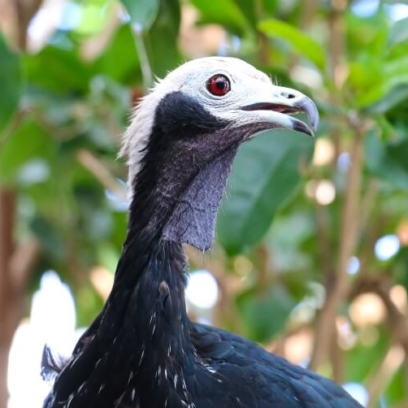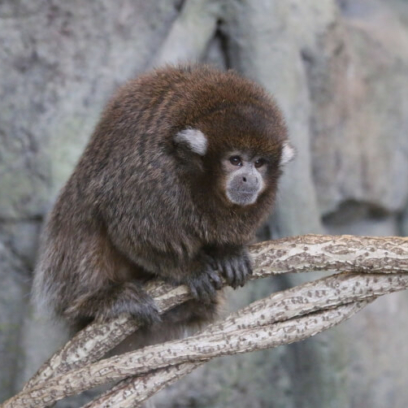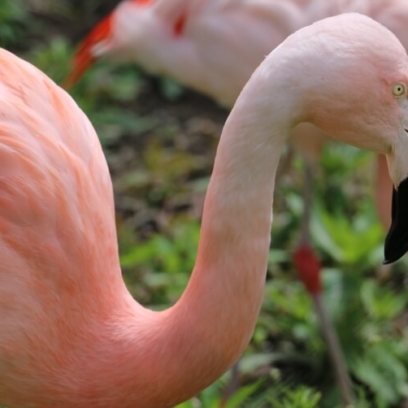Linne’s Two-Toed Sloth
Choloepus didactylusIsn’t it Wild? Linne’s two-toed sloths spend almost all of their lives upside down even while eating, sleeping, mating, and giving birth.
There’s More to the Story Sloths rarely come down from the canopy level of the rain forest, so if you’re ever on the lookout for these slow-moving mammals…just look up!

They’re the undeniable pull-up world champions and they’re 3X stronger than the average human! Special tendons in their hands and feet lock into place, allowing them to hang upside down for long periods of time without wasting any energy. This also gives them the ability to sleep while hanging from tree branches. And speaking of sleep…they sleep about 15 to 20 hours every day.
On average, sloths only travel 41 yards per day—less than half the length of a football field. Why do they move so slowly? It’s to conserve energy. To save energy they move at a relaxing pace and don’t wander too far from home.
Baby sloths will cling to their moms for nearly the first full year of their lives, then continue to stay by their mother’s side and within the same territory.
A sloth’s diet is primarily full of leafy greens, which are low in calories – a perfect match for their slow metabolism. Linne’s two-toed sloths are born with a set of small molars that continuously grow but are constantly ground down by chewing. Due to a lack of front teeth, they use their hardened lips to grasp and tear vegetation. They have a large, four-chambered stomach, like a cow. Even their innards move slowly, and some food items can take days or even up to an entire month to digest.
Details
Length: 21 – 29 in.
Weight: 9 – 19 lbs.
primate chow, tofu, strawberries, grapes, blueberries, apples, pears
tropical rainforests of Central to South America
Least Concern
Faces of the Rainforest
Exhibit information
Journey to the Amazon rainforest! Get a glimpse of the rare South American giant river otter. Giant is right! A full-grown otter can reach lengths of up to six feet long!
Wait until you meet the Titi monkeys who mate for life. They can typically be seen sitting or sleeping in pairs with their tails intertwined.
Do you hear that sound? That’s a howler monkey’s call, often heard at a distance of up to two or three miles away!
These animals are just some of the fascinating creatures you’ll discover in the Zoo’s awe-inspiring Faces of the Rainforest exhibit. They’ve joined some of your old favorites like the giant anteater, Chilean flamingos, and white-faced saki monkeys. Whether you’re interacting with toucans and troupials (troupials are a large passerine bird species found in Central America and tropical South America) inside the exhibit’s free-flight aviary or viewing a massive anaconda and stunning tropical fish, this immersive wildlife experience will take you on a journey to the depths of the Amazon Rainforest. Visitors will discover how these diverse species—big and small—create the complex ecosystem on which rainforests thrive, and what we can all do to ensure their survival.
Did you know that 80% of rainforest deforestation is caused by agriculture? Natural habitat is being destroyed to clear land for ranches and plantations. But simply by choosing to purchase sustainably grown products, you can make a difference.
One way to help protect the rainforest is to “Follow the Frog”! Just look for the Rainforest Alliance seal on products ranging from bananas and chocolate to coffee and flowers. Click HERE for a list of Rainforest Alliance certified products




